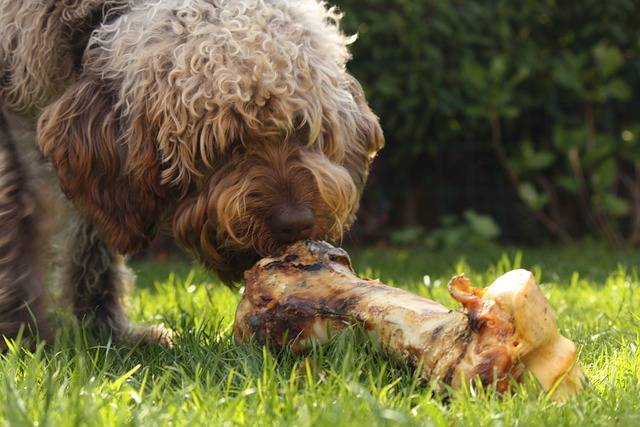Storing and Keeping Your Pet Food Fresh
As pet owners, we want to ensure that our furry friends receive the best nutrition possible. One crucial aspect of maintaining the quality of pet food is proper storage. Storing and keeping your pet food fresh not only helps preserve its nutritional value but also prevents potential health risks. In this comprehensive guide, we will provide you with valuable tips and techniques to ensure your pet’s food stays fresh, flavorful, and safe for consumption. topics such as Understanding the Importance of Proper Pet Food Storage, Selecting the Right Storage Containers for Pet Food, Tips for Storing Dry Pet Food, Best Practices for Storing Wet/Canned Pet Food, Managing Pet Food Expiration Dates, etc would be covered in this article.
Proper storage of pet food is crucial to maintain its freshness, nutritional value, and overall quality. Exposure to air, light, moisture, and high temperatures can accelerate the deterioration of pet food, leading to a loss of nutrients and potential contamination. By following the correct storage practices, you can ensure that your pet’s food remains safe, palatable, and nutritionally balanced.
Selecting the Right Storage Containers for Pet Food
Choosing the appropriate storage containers for your pet food is essential to preserve its freshness. Opt for airtight, durable plastic, glass, or metal containers. These containers help create a barrier against moisture, pests, and oxygen, keeping the food fresh for more extended periods. Additionally, consider containers with tight-sealing lids and handles for convenient handling and easy access to the food.
Tips for Storing Dry Pet Food
Dry pet food is famous for many pet owners due to its convenience and long shelf life. To keep dry pet food fresh, store it in a cool, dry place away from direct sunlight. Avoid transferring the food into containers that may introduce moisture or compromise the food’s integrity. Keeping the original packaging is also recommended, as it often contains important information such as the batch code and expiration date.
Best Practices for Storing Wet/Canned Pet Food
Wet or canned pet food requires specific storage considerations to maintain its freshness. Once opened, refrigerate the remaining food in a sealed container and use it within the recommended time frame. Avoid leaving open cans of wet food at room temperature for extended periods, as this can promote bacterial growth. It’s essential to monitor the expiration dates and promptly discard any spoiled or expired wet food.
Managing Pet Food Expiration Dates
Pay close attention to the expiration dates on pet food packaging. Opt for products with a longer shelf life to minimize waste when purchasing pet food. Use the FIFO (First In, First Out) method, where you place newer bags or cans of food behind older ones, ensuring that you use the oldest food first. Regularly check the expiration dates and properly dispose of any expired pet food.
Avoiding Common Mistakes in Pet Food Storage
To maintain the freshness of your pet’s food, avoiding common storage mistakes is crucial. Some common errors include leaving the food exposed to air, failing to secure lids tightly, storing pet food near heat sources, and using damaged or contaminated containers. By being mindful of these mistakes and taking proactive measures, you can significantly extend your pet’s food’s shelf life and quality.
Additional Considerations for Homemade Pet Food
If you prepare homemade pet food, following proper food safety guidelines is essential. Store homemade pet food in the refrigerator or freezer in airtight containers to prevent bacterial growth. Label the containers with the date of preparation and use them within the recommended time frames. Remember that homemade pet food generally has a shorter shelf life than commercially prepared options.
Long-Term Storage of Pet Food: Bulk Buying and Emergency Preparedness
Consider investing in specially designed airtight containers or food storage bins for long-term pet food storage, such as bulk buying or emergency preparedness. These containers are designed to keep large quantities of pet food fresh for an extended period. Rotating the stored food is crucial. They are using the oldest supplies first to maintain freshness. Regularly inspect the containers for signs of damage or pests and replenish the stock as needed.
Frequently Asked Questions (FAQs) about Pet Food Storage
a) How long can I store open dry pet food? b) Can I freeze wet pet food for long-term storage? c) Is it safe to store pet food in the garage? d) Can I mix different brands of pet food in one container? e) Should I wash the storage containers before refilling them?
General Conclusion
Properly storing and keeping your pet food fresh is crucial for ensuring the well-being of your furry companion. By understanding the importance of proper storage, selecting the suitable containers, and following specific guidelines for dry and wet pet food, you can maintain the freshness, nutritional value, and safety of your pet’s food. By implementing the tips provided in this guide, you’ll be able to provide your pet with high-quality, fresh food that supports their health and happiness.






Leave a Reply